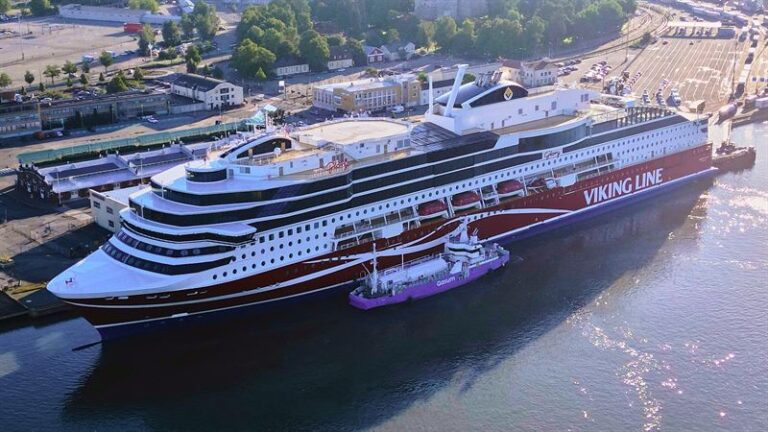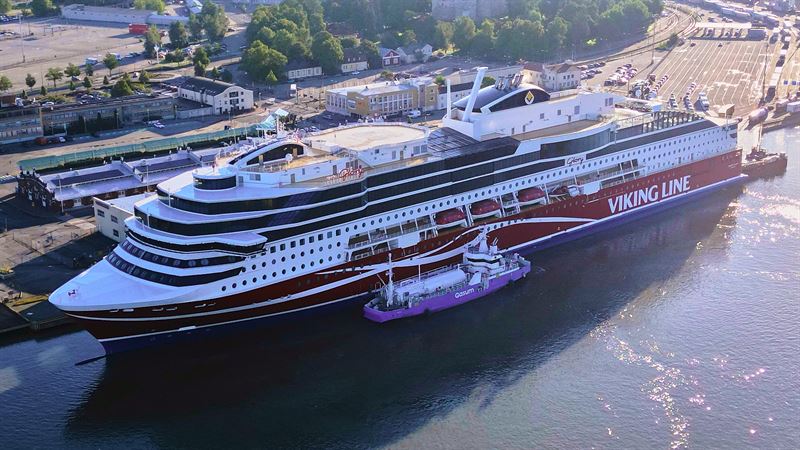The Finnish shipping company Viking Line announced plans to operate ships on the Turku route with liquefied biogas (LBG) for the first time.

As announced, the passenger ships Viking Glory and Viking Grace will be powered by biogas during the week starting with “Baltic Sea Day”, which is celebrated every year on the last Thursday in August.
The ships are expected to reduce their emissions by 90% during the trial.
According to the company, Viking Glory and Viking Grace will show what the future looks like for the first green shipping corridor on the Baltic SeaViking Line celebrates Baltic Sea Day by introducing the first green corridor between Turku and Stockholm for one week.
The climate-friendly ships Viking Glory and Viking Grace will use exclusively liquefied natural gas (LBG) as fuel from August 29 to September 4, which will reduce the ships’ carbon dioxide emissions by 90% compared to the liquefied natural gas (LNG) normally used.
During the week In total, around 2,600 tonnes less greenhouse gas emissions are generated than normalThe reduction corresponds to the average annual carbon footprint of 270 Finns.
“This is a historic moment for us, the Baltic Sea and maritime transport. Never before has liner transport been powered exclusively by biofuel. We have invested EUR 450 million in our climate-friendly ships Viking Grace and Viking Glory, and one of their most important features is that they can run on LNG, biofuel and future synthetic fuels from renewable energy. Such significant environmental measures are the result of our long-term work,” Daniel LindbergSustainability Manager at Viking Line, commented.
For a year now, Viking Line has been offering its passengers, conference and cargo customers the opportunity to purchase biofuel based on the amount of fuel used on their journey, reducing emissions per passenger or cargo unit by 90%.
LNG is normally used on the Turku route, and this fuel has significantly lower nitrogen oxide emissions than the heavy fuel oil traditionally used on ships. Both LNG and LBG liquefied biogas produce virtually no harmful sulphur or particulate emissions. Viking Line’s biogas is supplied by Gasum, which produces the fuel from food and agricultural waste. The biogas is produced in Europe and the origin of each gas delivery is clearly documented.
“We have already powered Viking Grace on our Turku route with biogas, and passengers and cargo customers on Viking Glory and Viking Grace already have the option to buy biogas when booking their trip to offset the fuel used on their own trip, thus reducing their trip’s emissions by up to 90 percent. Now, for the first time, we are sailing for a whole week on biogas alone, which is unique. Access to renewable fuels is still limited, and the price of such fuels is at least twice that of LNG. It is important to create demand so that supply increases and the price decreases,” added Lindberg.
Viking Line is participating in the development of a green sea corridor between Turku and Stockholm and between Helsinki and Tallinn. These green corridors are routes on which both cargo and passengers are transported in a CO2-neutral manner.
Emissions reduction in maritime transport is partly regulated by the EU’s Fit for 55 green transition programme, the EU Emissions Trading System (ETS) and the International Maritime Organization (IMO) greenhouse gas emissions strategy.




